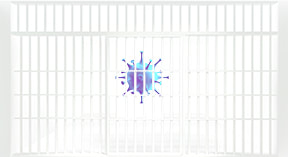 Ross Ross By Shannon Ross I'll get right to the meat: Gov. Tony Evers and the Department of Corrections have far more than the two options they mentioned for releasing people. They mentioned in a statement only Certain Earned Release and Special Action Parole, but they can also employ Community Residential Confinement (DOC Administrative Code 327.04, which allows them to let parole-eligible people finish their time at home, on community custody), Emergency removal (325.01), which allows release during an emergency, and leave (326) (which allows them to grant furloughs to "nonviolent" individuals for extended periods to facilitate family reintegration and stability). They can talk to judges around the state about granting more sentence adjustments (two guys here with nonviolent crimes and histories were just denied, but get released within four months anyways). They can parole more people – many have somewhere to go and are set for release in the next year or two anyways, so what will it matter if they go home now after having served 20-30 years in prison? Most of all, Evers can commute the sentences of everyone with less than a year left to serve on their sentences (or less than six months or four months or whatever he wants). One of my cellmates is doing 5 months on misdemeanors right now. Does it make ANY DAMN SENSE to not commute his sentence amid this pandemic? The Certain Earned Release option he mentioned only applies to a smidgen of a crumb of a percentage of incarcerated people (I'd be shocked if it was more than .01%). Everyone else they mentioned releasing in press releases the last two weeks was from jails and Milwaukee Secure Detention Facility. They have effectively done nothing to address the potential danger in prisons. Before I address Evers' and the DOC's repeated puffery about what they are doing to keep us "persons in their care" safe, let me applaud them on the one thing they have done right: the FAQ and the transparent, up-to-date COVID status pages on the DOC website. The public and our loved ones are able to see in real time (supposedly) how many staff and incarcerated people have been tested, how many tested positive and at what facilities, and how many are awaiting results. DOC and Evers could have done their typical suppression of info under the comically North Korea-esque guise of security reasons, but they have endeavored for sunshine instead. Thank you. But it pretty much ends there. They keep saying they have a plan, but judging from my experience and the hundreds of emails from incarcerated people statewide that I get in my role as manager of the most-widely read anti-mass incarceration publication in the state (thecommunitywis.wixsite.com/home), they seem like an infant learning to walk. Yes, they are providing two free phone calls a week (which, by the way, with the usurious phone rates they charge, is like stealing someone's car then claiming to be a good guy because you let them use it for free two times a week). But phone access has been curtailed at several facilities, especially where I am, and the calls commonly disconnect midway through (so much for a free 15-minute call when it hangs up on you within five minutes) and hardly anyone who was getting visits had problems with calling their loved ones in the first place (if you'll pony up $20-$50 for gas and snacks to visit someone in prison, you'll provide money so they can call you). As for the video visits, HA! I am at one of the facilities furthest from the urban areas where most of our loved ones reside and the prison has told us of no such thing beyond the long-established option for people to go to MSDF in Milwaukee for a 15-minute video visit (oh, and MSDF is closed to visitation, too). If they were truly serious about keeping us in touch with our loved ones, they would add more phones (which the phone vendor pays for), process our emails more than once a day (and maybe even provide some free emails, too), and add a photo or video-visiting feature to our tablets like the House of Correction and many other county jails have. Cleaning and access to cleaning supplies has generally increased where I am and at other facilities I have heard from. They have indeed been making an effort to ease tensions where I am by finally purchasing a license to show movies, buying puzzle and adult coloring books and colored pencil sets for everyone who wants them, easing up on the petty rule enforcement, and suspending room searches and the mass majority of random pat downs. But that is an anomaly as other facilities have done little to nothing to reduce tensions from the added restrictions and virus fears. As usual, the DOC is letting each place decide how to do things, which contradicts the impression they're putting out of an organized, calculated response. Meanwhile, anything right being done is nullified by staff practices and the mind-boggling attempts to socially distance us. The number one way COVID-19 will spread into a prison is via a staff member. Yet staff are still around us everyday, socially undistanced, with no masks, and not even made to wash their hands upon entering (though, here and other facilities, I'm told, are finally fever-testing staff). On April 6, staff were approved to wear masks if they want, but since then I have only seen three doing so (the memo said the DOC purchased fabric for incarcerated volunteers to make masks for staff, but we can't wear masks). Whenever we're taken off grounds for medical appointments, we're quarantined in the hole for two weeks when we return, while the two guards that escorted us the entire time return to roam and hangout anywhere in the prison as if their correctional uniforms act as full-body prophylactics. As for social distancing, I live in a four-story building made up of nine packed housing units of 40-60 men. As of April 9, they are separating each unit in half for meals, day room, rec, and courtyard. However, we interact closely all day in our six-foot wide hallway, our one shared bathroom, while waiting tightly in line to use the bathroom and shower (because of a pointless four-person limit), and by the sink to get water. We also walk up and down a 3½-foot, unventilated stairway to go to and return from rec, courtyard, appointments, and chow (where unmasked staff patrol the cafeteria while we eat). Even if we happen to not pass anyone, men from those units were just breathing all up and down the same narrow stairway minutes earlier. In addition, dozens of incarcerated workers interact closely with guys from different units multiple times a day in the kitchen then return to their respective units and cellmates. Whenever we're taken off grounds for medical appointments, we're quarantined in the hole for two weeks when we return, while the two guards that escorted us the entire time return to roam and hangout anywhere in the prison as if their correctional uniforms act as full-body prophylactics. I hate to say it, and my incarcerated community will HATE me for doing so, but a statewide lockdown, with constant air circulation and daily showers, laundry, and cell cleaning, gives us the best chance of fighting a crippling contagion. This is our equivalent of shelter in place. To make this difficult period easier on us and, therefore, easier on staff forced to deal with our understandable frustration, the DOC could do a variety of simple and cheap or free things (e.g., play more movies, process emails more than once a day, put quality items in our mandatory lockdown bag meals, and allow better features to be added to our exorbitantly high-priced tablets). But this will ONLY work with a smaller, less vulnerable prison population.
Again, Evers and the DOC can release those who are at high risk of serious complications from COVID-19 and/or statistically very low-risk to recidivate (men and women with nonviolent histories or reformed minds and spirits from having served lengthy sentences for violent crimes). And objections that this would put criminals back on the street are ridiculous fear-mongering because these individuals are no more dangerous now than they will be in a year or less, which has been proven with the success of such early releases in other jurisdictions the past decade. Yes, maybe COVID won't spread in any Wisconsin prison the way it is in the Cook County Jail in Illinois. But why take that chance when you don't have to and when the potential for calamity in this environment is so high? And yes, the DOC shouldn't release people who have nowhere to go and who would create more of a problem in society during this pandemic. But many of us are clearly ready and safe to be released now. There is no excuse – only misinformation, lies, and political gamesmanship. Shannon Ross is incarcerated at the Prairie du Chien Correctional Institution.
1 Comment
4/13/2020 07:33:46 pm
an impactful exposure of wi state legislators' malevolence, as they exhibited by forcing wisconsites to risk their health in order to vote. .
Reply
Your comment will be posted after it is approved.
Leave a Reply. |
Donate
Help WJI advocate for justice in Wisconsin
|
Copyright © 2024 Wisconsin Justice Initiative Inc.
The Wisconsin Justice Initiative Inc. does not endorse candidates for political office. The Wisconsin Justice Initiative Inc. is a 501(c)3 organization.
The Wisconsin Justice Initiative Inc. does not endorse candidates for political office. The Wisconsin Justice Initiative Inc. is a 501(c)3 organization.


 RSS Feed
RSS Feed